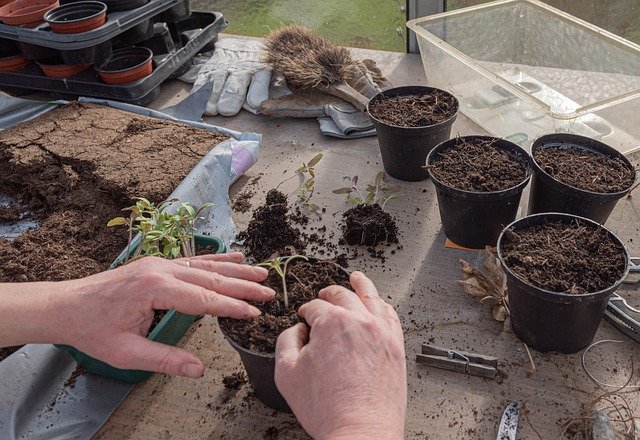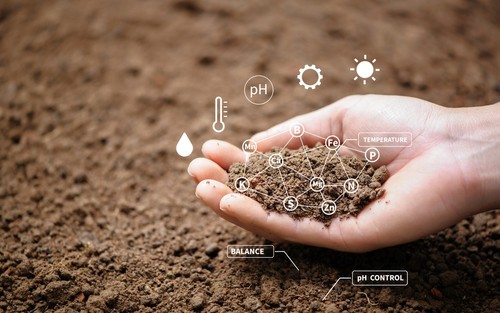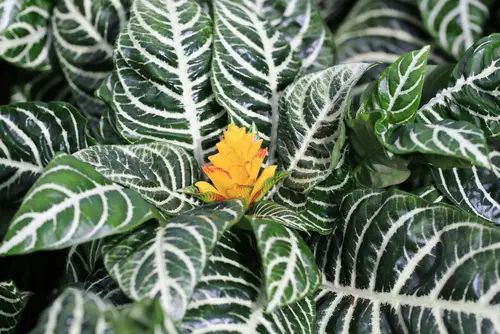Zebra plants are beautiful and unique houseplants that can add a touch of exoticism to any indoor space. However, if you notice your zebra plant dropping leaves, it can be a cause for concern.
While some leaf drop is normal, excessive leaf loss can indicate that something is wrong with your plant. In this article, we will explore the common reasons why zebra plants drop leaves and provide tips on how to fix the problem.
To understand why zebra plants drop leaves, it is important to first understand the plant itself. Zebra plants, also known as Calathea zebrina, are native to Brazil and are part of the Marantaceae family.
These plants have distinctive, striped leaves that can fold up at night, making them a popular choice for plant enthusiasts. However, zebra plants are also sensitive and require specific care to thrive.
There are several reasons why zebra plants may drop leaves. Overwatering, underwatering, lack of light, temperature fluctuations, pests, and diseases are all common culprits.
Additionally, repotting or moving the plant can also cause stress and lead to leaf drop. Understanding these factors and taking steps to address them can help you keep your zebra plant healthy and vibrant.
Key Takeaways
- Zebra plants are unique and sensitive houseplants that require specific care to thrive.
- Overwatering, underwatering, lack of light, temperature fluctuations, pests, and diseases are common reasons why zebra plants may drop leaves.
- Taking steps to address these factors can help you keep your zebra plant healthy and vibrant.
More on this category:
- Why Is My Snake Plant Growing Sideways?
- Why Is My Snake Plant Getting Soft?
- Why Is My Snake Plant Getting Mushy?
Understanding Zebra Plant

Zebra plant (Aphelandra squarrosa) is a beautiful houseplant that is native to Brazil. It is a tropical plant that belongs to the family Acanthaceae.
Zebra plant is known for its striking foliage, which features dark green leaves with white veins that resemble zebra stripes. The plant can grow up to 3 feet tall and produces yellow flowers that bloom in the summer.
Zebra plant is a popular choice for indoor gardening because of its unique appearance and easy care. However, like any other plant, it can face problems, such as dropping leaves. Understanding the nature of the plant can help you identify the causes of leaf drop and take appropriate measures to prevent it.
Zebra plant is a tropical plant that thrives in warm and humid conditions. It prefers bright, indirect light and well-draining soil. Overwatering can cause the roots to rot, leading to leaf drop.
On the other hand, underwatering can cause the leaves to wilt and drop. Zebra plants are sensitive to temperature changes and can suffer from stress in extreme conditions.
Why Is My Zebra Plant Dropping Leaves – 8 Common Problems
Zebra plants are known for their striking foliage, but if you notice leaves falling off your plant, it can be concerning. Here are some common reasons why zebra plant leaves may droop or fall off:
- Overwatering: Zebra plants prefer high humidity but cannot tolerate soggy soils. Overwatering can cause the roots to rot, which can lead to leaf drop.
- Underwatering: On the other hand, if you are not watering your zebra plant enough, it can also cause the leaves to droop and fall off. Make sure to water your plant thoroughly and let the soil dry out slightly between waterings.
- Low humidity: Zebra plants are native to tropical regions and prefer high humidity. If the air in your home is too dry, it can cause the leaves to dry out and fall off. Consider using a humidifier or placing a tray of water near your plant to increase humidity.
- Temperature stress: Zebra plants prefer temperatures between 60-75°F (15-24°C). If the temperature fluctuates too much or if the plant is exposed to drafty areas or cold temperatures, it can cause the leaves to droop or fall off.
- Pests: Zebra plants can be susceptible to spider mites, mealybugs, and scale insects. These pests can cause damage to the leaves and cause them to fall off. Inspect your plant regularly and treat any pest infestations promptly.
- Transplant shock: If you recently repotted your zebra plant or moved it to a new location, it can cause the leaves to droop or fall off due to transplant shock. Give your plant time to adjust to its new environment.
- Nutrient deficiencies: Zebra plants require regular fertilization to thrive. If your plant is not getting enough nutrients, it can cause the leaves to droop and fall off. Make sure to fertilize your plant regularly with a balanced fertilizer.
- Disease: Zebra plants can be susceptible to fungal and bacterial diseases, which can cause the leaves to droop and fall off. If you notice any signs of disease, such as brown spots or soft, mushy leaves, take action immediately to prevent the spread of the disease.
By identifying the cause of leaf drop and taking appropriate action, you can help your zebra plant recover and thrive.
Watering Issues

When it comes to zebra plants, watering issues are one of the most common reasons for leaves dropping off. Zebra plants are native to tropical regions and prefer high humidity, but they cannot tolerate soggy soils. On the other hand, if the soil is too dry, it can cause the leaves to droop and eventually fall off.
Overwatering
Overwatering is one of the most common reasons for zebra plant leaves to fall off. If the soil is constantly wet or waterlogged, it can cause the roots to rot. This can lead to several problems, including leaf drop. Therefore, it is important to allow the soil to dry out between waterings.
To avoid overwatering, it is recommended to water the zebra plant once a week or when the top inch of soil is dry to the touch. It is also important to ensure that the pot has proper drainage to prevent water from accumulating at the bottom of the pot.
Underwatering
Underwatering is another common cause of zebra plant leaves dropping off. When zebra plants don’t get enough water, their leaves start drooping. This is because the plant is not getting the moisture it needs to support its leaves.
To avoid underwatering, it is recommended to water the zebra plant regularly, especially during the warmer months. If the soil around the plant is dry, it is important to give it a good watering. It is also recommended to use lukewarm water to avoid shocking the plant’s roots.
Light and Temperature Factors
Inadequate Light
One of the most common reasons why zebra plants drop leaves is inadequate light. Zebra plants require bright, indirect light to grow and thrive. If the plant is not receiving enough light, it will start to drop leaves.
It’s important to note that direct sunlight can be harmful to zebra plants, so it’s best to place them in a location with bright, indirect light.
If a zebra plant is not receiving enough light, it will start to stretch out towards the light source. This can cause the stems to become leggy and weak, which can lead to leaf drop. If you notice your zebra plant stretching towards a window, it may be a sign that it needs more light.
Extreme Temperatures

Temperature can also play a role in zebra plant leaf drop. Zebra plants prefer warm temperatures, but they can tolerate cooler temperatures as well. However, extreme temperatures, whether hot or cold, can cause stress to the plant and lead to leaf drop.
If a zebra plant is exposed to cold temperatures, it can cause the leaves to turn yellow and drop off. On the other hand, if the plant is exposed to hot temperatures, it can cause the leaves to wilt and drop off.
It’s important to keep zebra plants in a location with a consistent room temperature, avoiding areas with drafts or extreme temperatures.
Plant Diseases and Pests
Disease
Zebra plants are susceptible to several diseases that can cause the leaves to fall off. One of the most common diseases that affect zebra plants is leaf spot. This disease is caused by a fungus that thrives in warm and humid conditions.
Symptoms of leaf spot include brown or black spots on the leaves, which can eventually cause the leaves to drop off.
Another disease that can affect zebra plants is powdery mildew. Powdery mildew is a fungal disease that can cause a white powdery substance to appear on the leaves. This disease can weaken the plant and cause the leaves to fall off.
To prevent powdery mildew, it is important to keep the plant in a well-ventilated area and avoid overhead watering.
Infestation
Zebra plants can also be infested with pests such as mealybugs and spider mites. Mealybugs are small, white insects that can be found on the leaves and stems of the plant. They feed on the plant sap and can cause the leaves to turn yellow and fall off.
Spider mites are tiny insects that can be found on the undersides of the leaves. They can cause the leaves to turn yellow and fall off.
Root rot is another common problem that can cause zebra plants to drop their leaves. This is caused by overwatering the plant, which can lead to the roots becoming waterlogged and eventually rotting. To prevent root rot, it is important to water the plant only when the top inch of soil is dry to the touch.
To prevent infestations and diseases, it is important to keep the zebra plant healthy by providing it with the right amount of water, light, and nutrients. Regularly inspecting the plant for signs of pests and diseases can also help prevent problems from becoming more serious.
Impact of Repotting and Moving

When a zebra plant is repotted or moved to a new location, it can experience some stress that may cause it to drop leaves. It is important to understand the impact of repotting and moving on a zebra plant to minimize the stress and ensure the plant remains healthy.
Transplant Shock
One of the main reasons why zebra plants may drop leaves after repotting or moving is due to transplant shock. This occurs when the plant is disturbed, and its roots are damaged during the transplanting process. The roots may also be exposed to air, which can cause them to dry out and become damaged.
To minimize transplant shock, it is important to be gentle when handling the zebra plant. The plant should be carefully removed from its old pot and placed in the new pot with fresh potting soil. It is also important to ensure that the new pot has adequate drainage holes to prevent water from accumulating at the bottom.
Acclimating to New Environment
When a zebra plant is moved to a new location, it may also experience some stress as it acclimates to its new environment. This can be caused by changes in light, temperature, humidity, and air circulation.
To minimize the stress of acclimating to a new environment, it is important to gradually introduce the zebra plant to its new surroundings. This can be done by placing the plant in a shaded area for a few days and gradually increasing the amount of sunlight it receives.
It is also important to maintain a consistent temperature and humidity level in the new location.
In addition, adding sand to the potting soil can help improve drainage and prevent water from accumulating at the bottom of the pot. This can help reduce the risk of root rot, which can also cause zebra plants to drop leaves.
Fertilizer and Soil Considerations
Fertilizing Issues
Over-fertilizing or under-fertilizing your zebra plant can cause leaf drop. Zebra plants require fertilization during the growing season, which is spring and summer. Fertilizing during the dormant season can cause root damage and leaf drop.
When fertilizing, it is important to use a balanced fertilizer with equal amounts of nitrogen, phosphorus, and potassium. Overuse of nitrogen can cause leaf drop, while underuse of potassium can cause yellowing of leaves.
Soil Conditions

Zebra plants require well-draining soil to prevent root rot. Soil that is too compacted or dense can cause water to pool, leading to root damage and leaf drop.
When potting your zebra plant, use a well-draining potting soil that contains sand or perlite. This will allow water to drain properly and prevent root rot.
It is important to monitor soil moisture levels to prevent overwatering or underwatering. Overwatering can cause root rot, while underwatering can cause leaf drop. A good rule of thumb is to allow the top inch of soil to dry out before watering again.
Additional Care Tips for Healthy Zebra Plant
To keep your zebra plant healthy and prevent leaf drop, there are a few additional care tips to keep in mind.
1. Watering
As mentioned earlier, zebra plants prefer consistently moist soil, but they cannot tolerate soggy soil. Overwatering can lead to root rot and leaf drop. On the other hand, underwatering can cause the leaves to droop and fall off.
The best way to water your zebra plant is to allow the top inch of soil to dry out before watering again. When you do water, make sure to water thoroughly so that the water reaches the roots.
2. Humidity
Zebra plants are native to tropical regions and prefer high humidity. Low humidity can cause the leaves to dry out and fall off. To increase humidity, you can mist your zebra plant with water once or twice a week. You can also place a tray of water near the plant to increase the humidity level around it.
3. Light
Zebra plants prefer bright, indirect light. Direct sunlight can scorch the leaves and cause them to fall off. If your zebra plant is not getting enough light, it may become weak and drop leaves. You can move your plant to a brighter location or supplement with artificial light if necessary.
4. Fertilizer

Zebra plants do not require frequent fertilization, but you can fertilize them once a month during the growing season with a balanced, water-soluble fertilizer. Overfertilizing can cause the leaves to yellow and drop off, so be careful not to overdo it.
5. Flower Bract
Zebra plants produce beautiful flower bracts, but they can also cause the plant to drop leaves. To prevent this, you can remove the flower bracts after they have finished blooming.
6. Trees and Weather
If your zebra plant is located near a tree, it may not be getting enough light or water. Trees can also block the wind, which can prevent air circulation and increase the risk of fungal diseases. Additionally, extreme weather conditions such as cold drafts or hot, dry air can cause the leaves to drop off.
Frequently Asked Questions
What causes zebra plant leaves to droop?
There are several reasons why zebra plant leaves may droop. One of the most common causes is underwatering. Zebra plants need to be watered about once a week or when the top inch of soil is dry to the touch.
Overwatering can also cause drooping, as it can lead to root rot. Other possible causes include pests, temperature extremes, and inadequate light.
How can I stop my zebra plant leaves from curling?
Curling leaves can be a sign of underwatering or overwatering. Make sure you are watering your zebra plant appropriately and that the soil is well-draining.
Curling leaves can also be caused by pests, such as spider mites or mealybugs. Check your plant for signs of infestation and treat accordingly.
Is it possible to revive a dying zebra plant?
It is possible to revive a dying zebra plant, but it depends on the severity of the problem. If the plant is severely dehydrated, try giving it a good soak and then placing it in a humid environment.
If the plant is suffering from root rot, try repotting it in fresh, well-draining soil. If the plant is infested with pests, treat the infestation and remove any damaged leaves.
What causes brown spots on zebra plant leaves?
Brown spots on zebra plant leaves can be caused by a variety of factors, including overwatering, underwatering, pests, and fungal infections.
If the spots are caused by overwatering or underwatering, adjust your watering habits accordingly. If the spots are caused by pests or fungal infections, treat the plant with appropriate measures.
How can I prevent overwatering my zebra plant?
To prevent overwatering, make sure your zebra plant is in a well-draining pot with plenty of drainage holes. Water the plant only when the top inch of soil is dry to the touch. Make sure the pot is not sitting in a saucer of water, as this can lead to waterlogged soil and root rot.
What are some tips for reviving a zebra plant?
To revive a zebra plant, make sure it is getting the appropriate amount of water, light, and humidity. Check for pests and treat as necessary.
If the plant is suffering from root rot, repot it in fresh, well-draining soil. If the plant is severely dehydrated, give it a good soak and place it in a humid environment.

Hey, I’m Lisa and I’ve been an avid gardener for over 30 years. I love writing, talking and living in the garden! Feel free to connect with me on my socials below


